Quick Look: PowerColor’s Radeon HD 5770 PCS+ Vortex Edition
by Ryan Smith on August 25, 2010 11:22 AM EST- Posted in
- GPUs
- AMD
- Radeon
- PowerColor
The Test & Performance
As the Vortex has a slight factory overclock compared to a stock-clocked 5770, we’ve run our usual gauntlet of benchmarks. We’ll forgo the running commentary, but with a 5% core overclock and 2% memory overclock, the card performs a few percent better than the stock-clocked 5770 on average.
| CPU: | Intel Core i7-920 @ 3.33GHz |
| Motherboard: | Asus Rampage II Extreme |
| Chipset Drivers: | Intel 9.1.1.1015 (Intel) |
| Hard Disk: | OCZ Summit (120GB) |
| Memory: | Patriot Viper DDR3-1333 3 x 2GB (7-7-7-20) |
| Video Cards: |
AMD Radeon HD 5970 AMD Radeon HD 5870 AMD Radeon HD 5850 AMD Radeon HD 5830 AMD Radeon HD 5770 AMD Radeon HD 5750 AMD Radeon HD 4890 AMD Radeon HD 4870 1GB AMD Radeon HD 4850 AMD Radeon HD 3870 NVIDIA GeForce GTX 480 NVIDIA GeForce GTX 470 NVIDIA GeForce GTX 465 NVIDIA GeForce GTX 295 NVIDIA GeForce GTX 285 NVIDIA GeForce GTX 275 NVIDIA GeForce GTX 260 Core 216 NVIDIA GeForce 8800 GT NVIDIA GeForce GTX 460 1GB NVIDIA GeForce GTX 460 768MB PowerColor Radeon HD 5770 PCS+ Vortex Edition |
| Video Drivers: |
NVIDIA ForceWare 197.13 NVIDIA ForceWare 257.15 Beta NVIDIA ForceWare 258.80 Beta AMD Catalyst 10.3a AMD Catalyst 10.7 |
| OS: | Windows 7 Ultimate 64-bit |
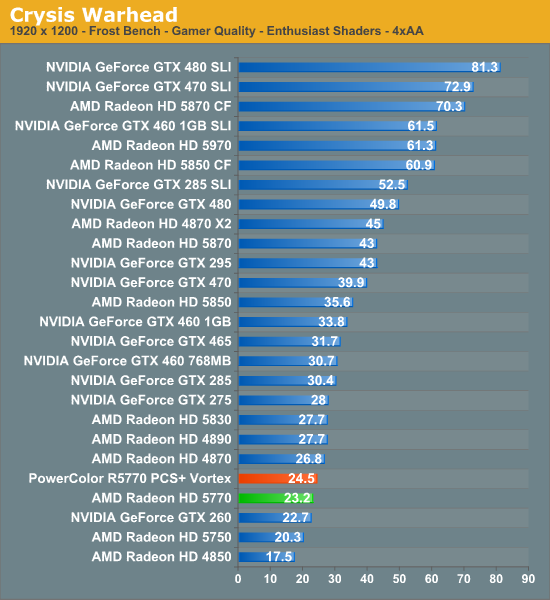
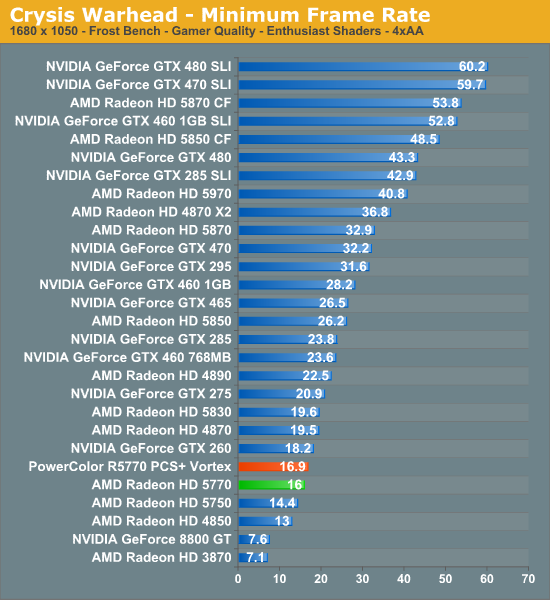
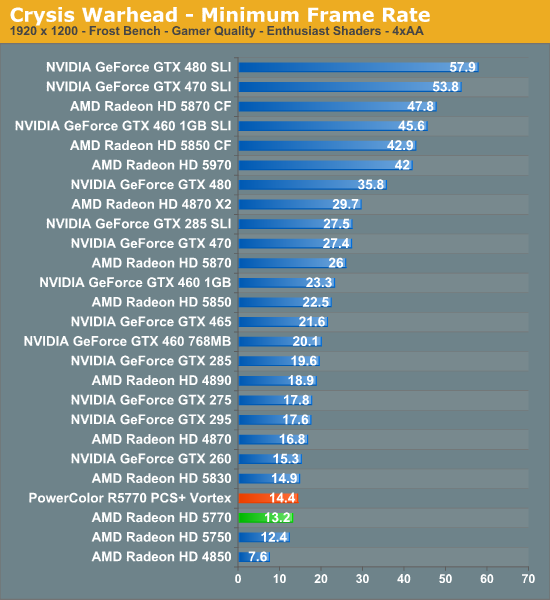
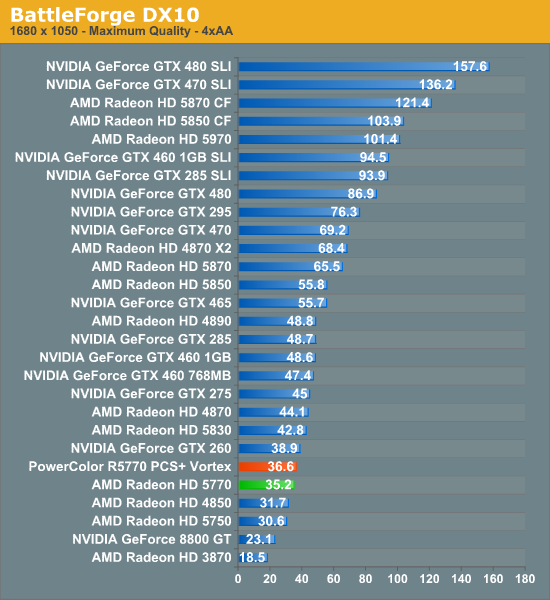
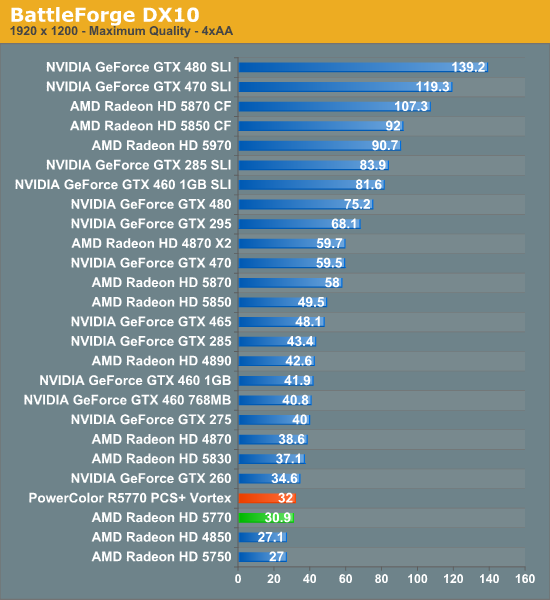
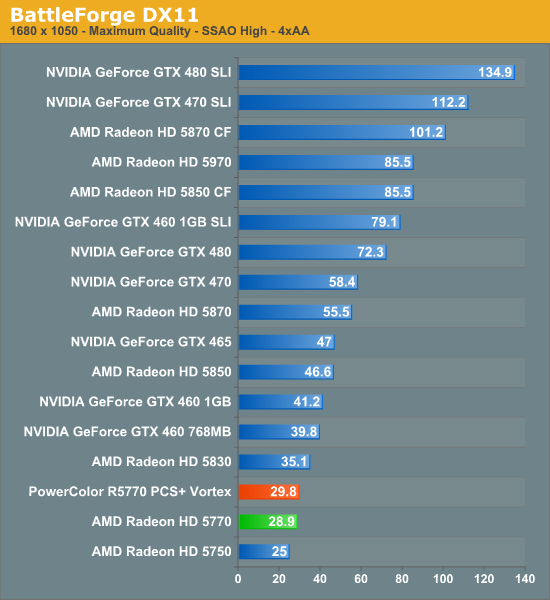
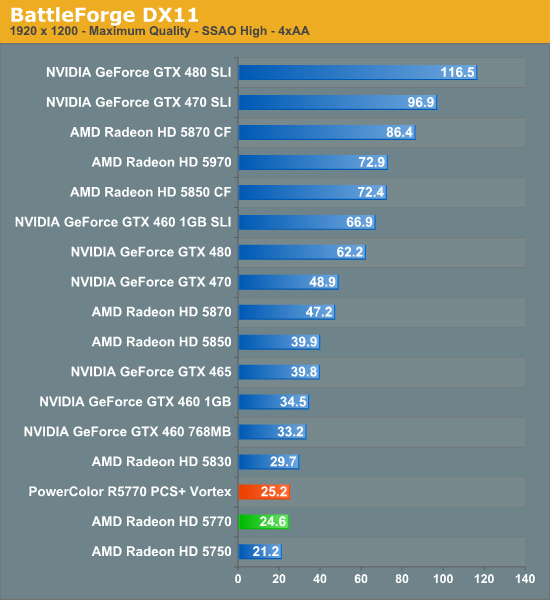
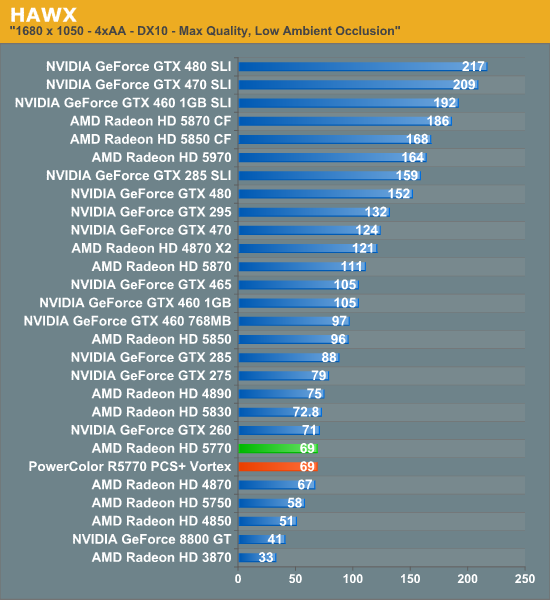
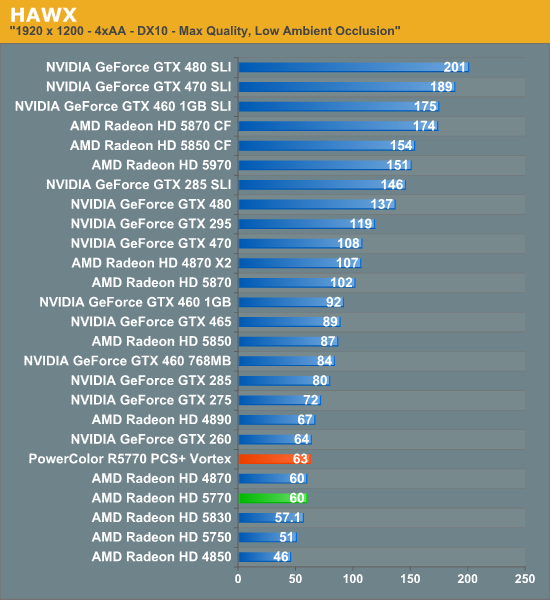
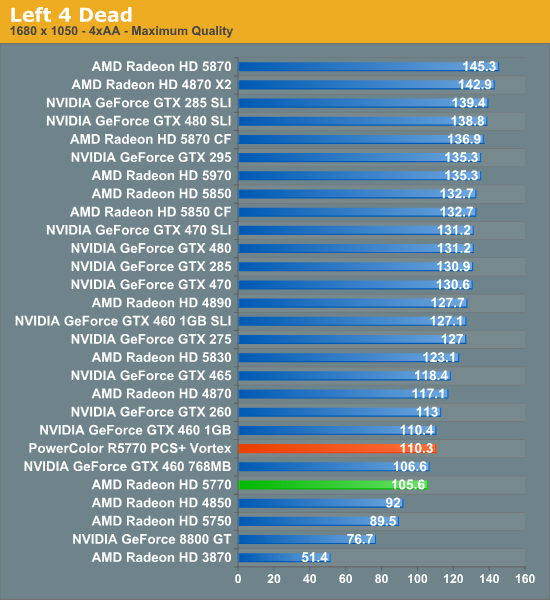
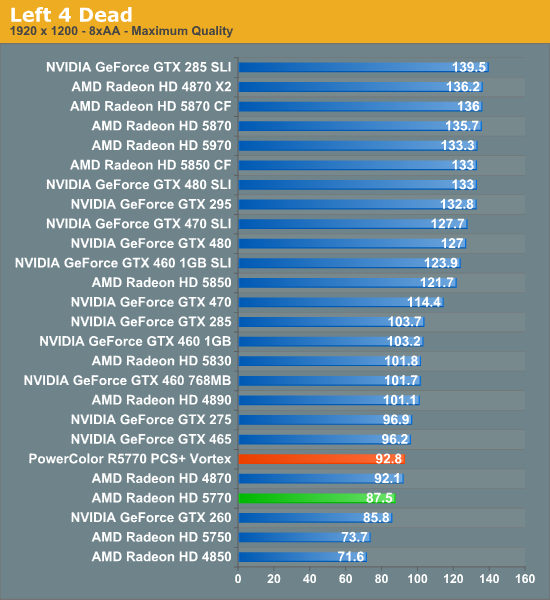
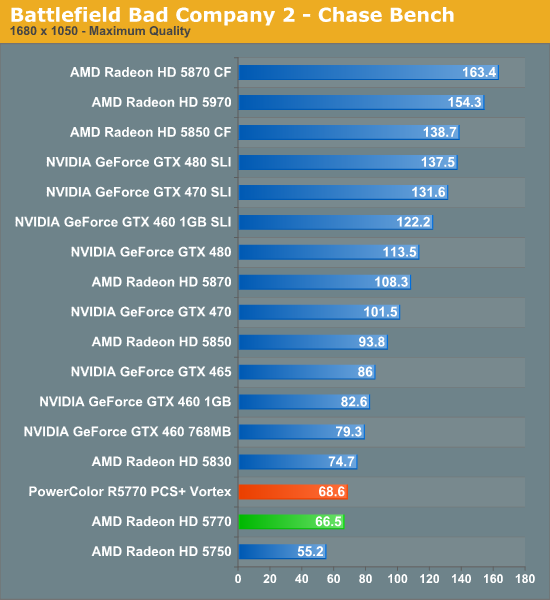
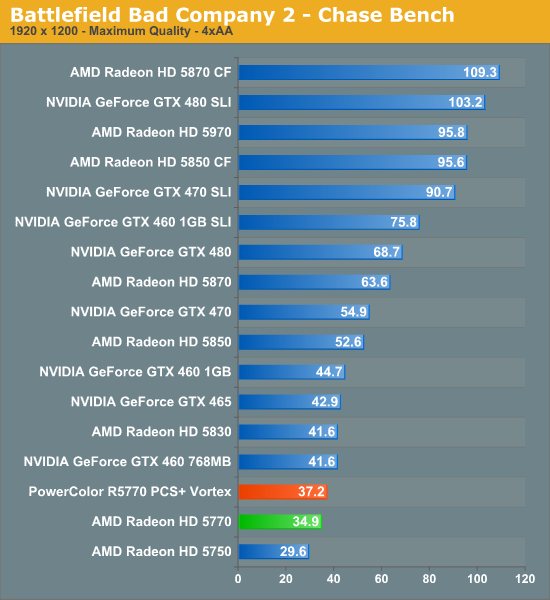
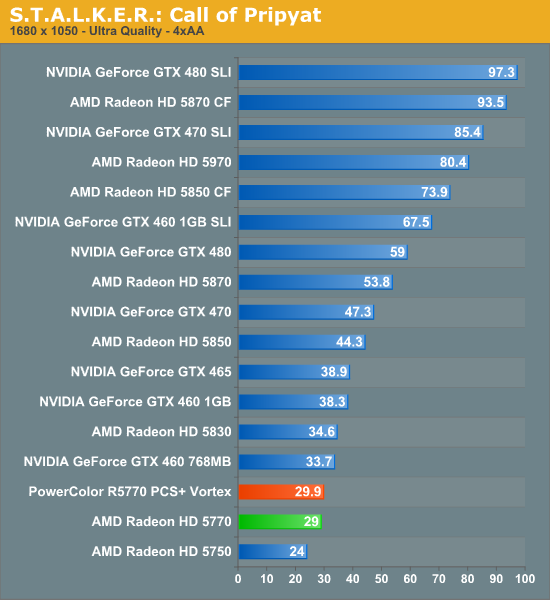
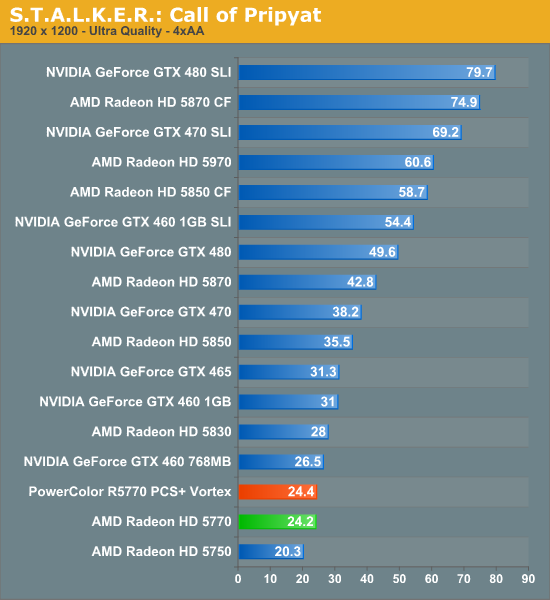

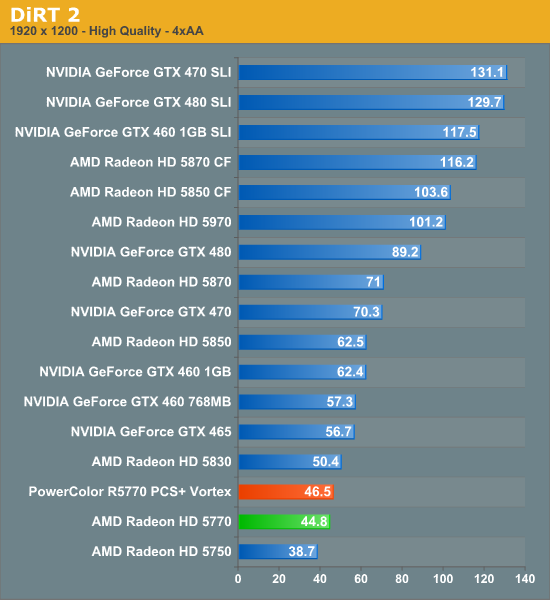

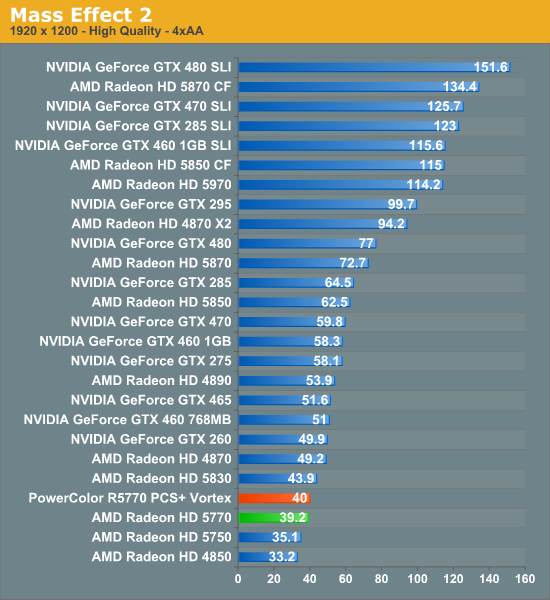
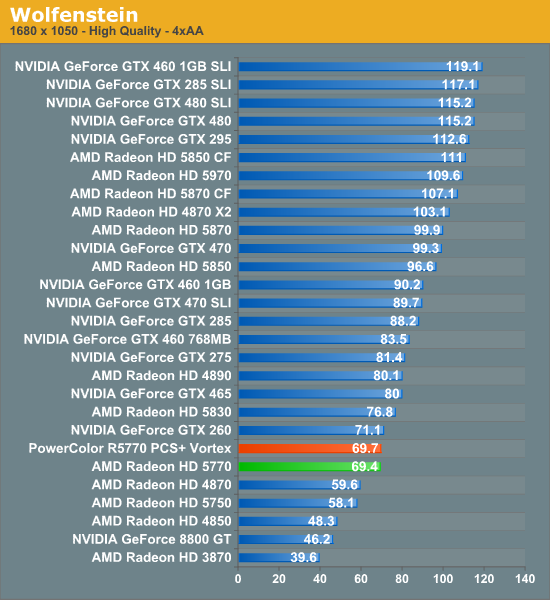
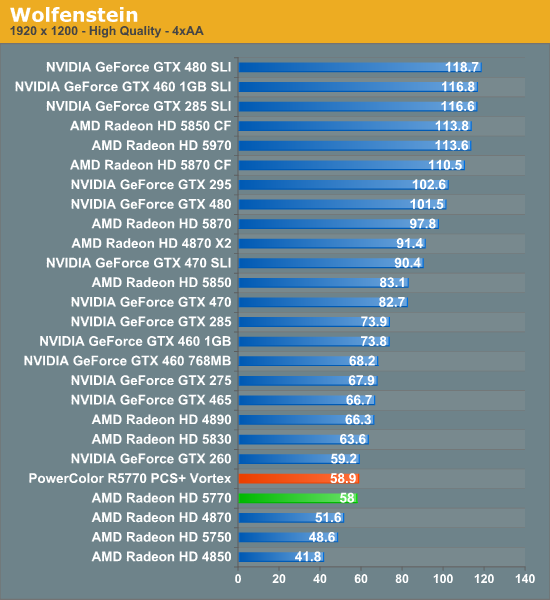










26 Comments
View All Comments
Ryan Smith - Thursday, August 26, 2010 - link
Data for lower-end cards will be coming next month. We have to build a new benchmark suite for those cards, and it takes (a lot of) time to gather that data.Phynaz - Thursday, August 26, 2010 - link
Charts are way two crowded. You're comparing two 5770's, we don't need results from SLI GTX480's.LoneWolf15 - Thursday, August 26, 2010 - link
PCB of the card is definitely not reference-design, and looks "cheaped down". Only one crossfire connector. Also, note that the reference design 5770 had three-phase power. A number of aftermarket cards cut down to two phases to save $$$.Since there are few, if any 5770 reference-design cards left on the market (might be a few from Diamond, but most manufacturers have switched), I normally look at ASUS, one of the few vendors that actually designed their reference cards to be equal or better, rather than to save costs. Other vendors like XFX, Sapphire, and (apparently) PowerColor seem to be going the other way.
LoneWolf15 - Thursday, August 26, 2010 - link
After checking, it seems even ASUS may have cut down their 5770 card. The only two left I'd be interested in are MSI's HAWK 5770, and Diamond's 5770PE51G, which (if you can find one) should be a reference design.The downside to Diamond is that customer support is a real crap-shoot. I guess that would leave me looking for a used reference-design 5770 on Ebay; they're still the best version of the card.
shin0bi272 - Thursday, August 26, 2010 - link
Come to think of it if the coolers we have now had something like heat pipes in them instead of fins we could still be getting away with single slot coolers. A gang of oil filled tubes with radial fins extending from the gpu to the ends of the card and one or two going over the ram bank (maybe in a loop) with a 12 bladed 92x5mm fan (or maybe 2 if you wanted to cover the entire card) could offer enough cooling in a cost effective design for the card makers to offer them stock instead of everyone having to buy aftermarket coolers. Granted an aftermarket cooler isnt hard to put on but it does void your warranty which sucks if the card dies.LoneWolf15 - Friday, August 27, 2010 - link
It doesn't void the warranty for every company.XFX (and possibly some others) know that a user might want to water cool their card, so the warranty isn't void for removing the cooler, as long as you don't screw the card up in the process. In my case, I removed the cooler from my reference 5870-XXX Edition almost immediately, to replace the TIM. I found the factory had really glopped it on, so I re-applied it more conservatively, which improved GPU temperatures slightly.